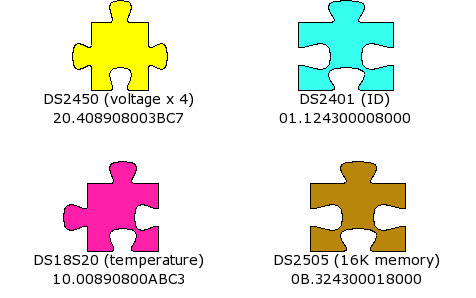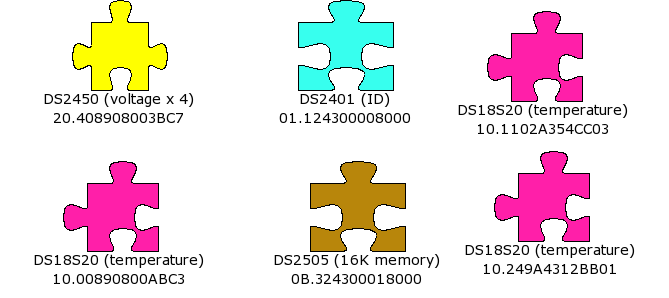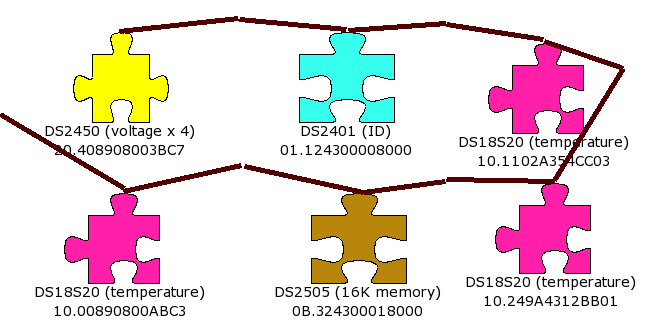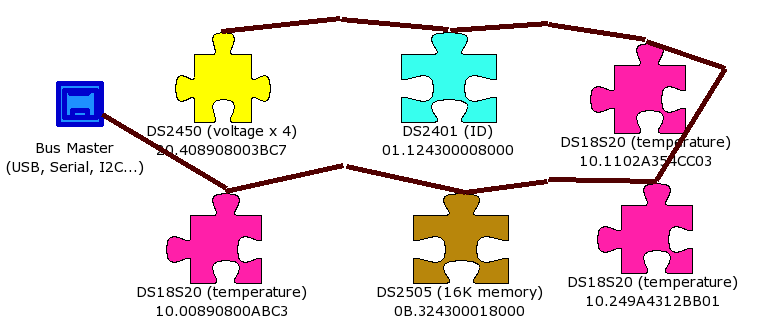Master and slaves
Introduction -- Master and Slaves
Slaves
Dallas/Maxim makes a series of chips called 1-wire slaves.
-
Each has a unique ID number (8 bytes)
-
The first byte is the Family code and gives the type of chip
-
The next 6 bytes are a unique ID number
-
The last byte is a check byte
-
All the slaves can be connected on a common wire (well, you need a ground wire too).
-
Data is sent along this wire.
-
The slaves steal power from the comminucation (parasytic power)
-
The slaves can announce their presence and ID
-
The slaves can be individually addressed.
Some slaves

Notice that each slave has a unique number. The type is also shown.
No two slaves are alike
More than one slave of the same type can be included:

Here there is more than one temperature chip. With the unique ID, they can be distinguished.
Chain gang
But the slaves need to be connected. A single line (plus ground).
-
The type of wire isn't too important. It carries 5V and little current.
-
A single line is far preferable to a branching pattern.
-
With care, the total length can extend to a few hunder meters.
-
OWFS makes long runs less common
-
It is easy to partition the network.
-
Wireless (wifi) hubs.

We are still missing something.
All these chips are passive (that's why they are called slaves).
They don't initiate a signal.
They can't talk to each other.
Master and slaves

Finally, the full picture.
The slaves signal by allowing the voltage to be high, or shorting it to ground.
-
The bus master sets and reads the line voltage
-
The bus master initiates all communication
-
The bus master connects to the computer via
-
USB
-
serial port
-
network
-
direct
-
parallel port
-
i2c
Previous page: What is 1-wire?
Next page: Divide and conqueror